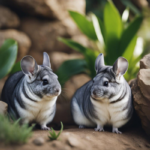When it comes to the world of small and furry pets, chinchillas are undoubtedly a popular choice. These little critters are renowned for their luxurious fur, endearing personalities, and unique behaviours. One such behaviour that often captivates chinchilla enthusiasts is chinchilla tail wagging. But what exactly does it signify?
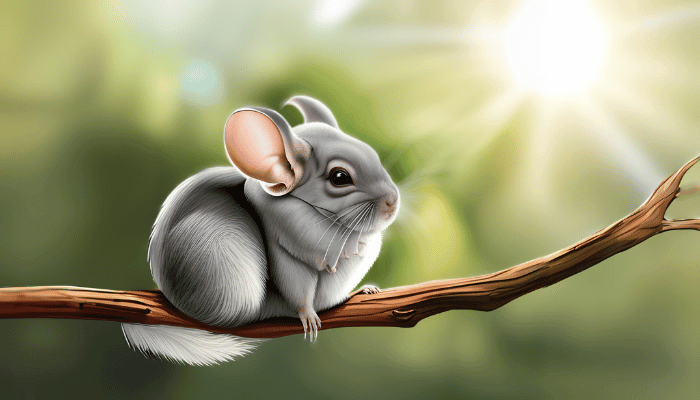
Is it a form of communication, a sign of happiness, or something entirely different? In this comprehensive guide, we’ll delve into the world of chinchilla tail wagging, exploring its various aspects, meanings, and everything you need to know to decode this captivating behaviour.
What Is Chinchilla Tail Wagging?
Let’s start by breaking down the basics. What exactly is a chinchilla tail wagging? Chinchilla tail wagging is a behaviour in which a chinchilla rapidly moves its tail from side to side, resembling a pendulum in motion.
This action is distinctive and not commonly observed in many other rodent species, making it a fascinating aspect of chinchilla behavior. While it may appear simple, the reasons behind this tail wagging can be quite complex.
Why Do Chinchillas Wag Their Tails?

Chinchilla tail wagging can serve various purposes, and the reasons behind it may differ from one situation to another. Let’s explore some of the most common explanations for this intriguing behavior:
Communication: Chinchillas Speak with Their Tails: Chinchillas are social animals, and they often use body language to communicate with each other. Tail wagging can be a form of non-verbal communication among chinchillas, conveying information about their intentions, emotions, or even warnings to their companions.
Playful Expression: Tails in Motion: Chinchillas are known for their playful and active nature. Tail wagging can sometimes be a sign of a chinchilla’s excitement, especially when they engage in playtime or explore their surroundings. It’s as if their tails can’t help but join in on the fun!
Stress or Fear: Wagging as a Warning: On the flip side, chinchilla tail wagging can also indicate stress or fear. When a chinchilla feels threatened or uncomfortable, they may exhibit this behaviour as a warning to potential predators or disturbances in their environment.
Mating Rituals: Love Is in the Air: During the mating season, chinchillas may use tail wagging as part of their courtship rituals. This signals their readiness to engage in mating activities and can be observed as a dance of love among potential partners.
Agitation and Discomfort: A Cry for Help: Chinchillas may wag their tails when they are experiencing discomfort or irritation. This could be due to health issues, such as skin problems or digestive discomfort. Paying attention to the context and other signs is crucial to determine the root cause.
Can Chinchilla Tail Wagging Be Harmful?
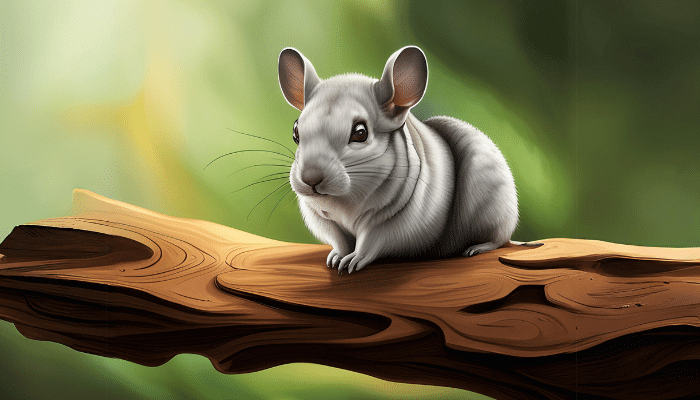
While tail wagging is a normal behaviour for chinchillas, there are situations where it might indicate underlying issues that require attention. As a responsible chinchilla owner, it’s essential to monitor your pet’s tail wagging patterns and look out for any red flags. Here are some potential concerns to be aware of:
Overly Frequent Wagging: If you notice that your chinchilla is tail-wagging excessively, it could be a sign of stress or discomfort. Assess the environment and potential stressors in your chinchilla’s life to address the issue promptly.
Loss of Fur in the Tail Area: Tail wagging that results in fur loss or bald spots around the tail is a cause for concern. This may be a sign of dermatological problems or skin irritation, and a visit to the veterinarian is warranted.
Aggressive Tail Wagging: Chinchillas may exhibit aggressive tail wagging when interacting with other chinchillas or even humans. It’s essential to understand the context and take steps to prevent aggressive behaviour to ensure a harmonious chinchilla community.
Decoding Chinchilla Tail Wagging
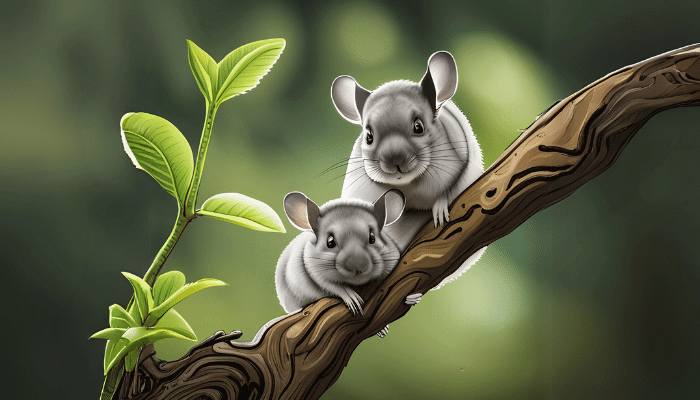
Understanding your chinchilla’s tail wagging requires careful observation and consideration of the context. Here are some tips to help you decode this intriguing behaviour:
Watch for Context: Pay attention to what’s happening around your chinchilla when it wags its tail. Are they playing, eating, or in a new environment? Context can provide valuable clues.
Assess Body Language: Look at your chinchilla’s overall body language. Are they relaxed, tense, or showing signs of distress? Tail wagging should be considered in conjunction with their general demeanour.
Listen to Vocalizations: Chinchillas often vocalize along with tail wagging. Happy chinchillas may make soft, chirping sounds, while distressed ones may emit louder, more persistent noises.
Rule Out Health Issues: If you’re concerned about your chinchilla’s tail wagging, rule out any potential health problems by consulting a veterinarian. It’s better to be safe than sorry.
Common Misconceptions about Chinchilla Tail Wagging
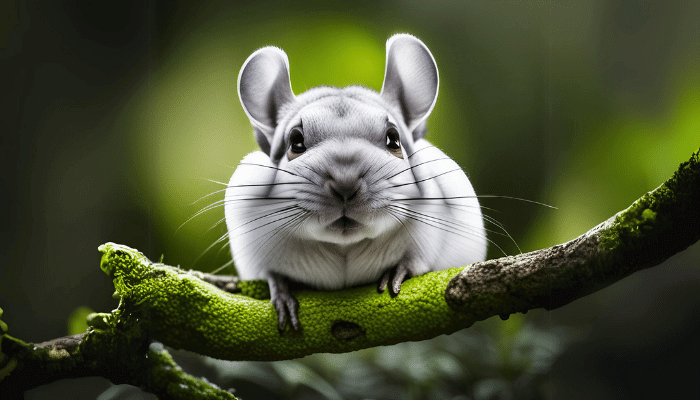
Chinchilla tail wagging is a unique behaviour, and as such, it has given rise to several misconceptions among pet owners. Let’s debunk some of these myths.
Myth 1: Chinchillas Only Wag Their Tails When They’re Unhappy
This is not true. Chinchillas can wag their tails for various reasons, including happiness and excitement.
Myth 2: Tail Wagging Always Indicates Illness
While tail wagging can be a sign of distress, it doesn’t necessarily mean your chinchilla is sick. Consider the context and other behaviours.
Myth 3: Chinchillas Wag Their Tails to Annoy Their Owners
Chinchillas are not mischievous creatures. Tail wagging is not intended to annoy you but rather to convey their emotions or reactions.
When to Be Concerned About Chinchilla Tail Wagging

While chinchilla tail wagging is often harmless, there are situations where it could signal an underlying issue:
Persistent Distress: If your chinchilla’s tail wagging is accompanied by persistent vocalizations, fur fluffing, or other signs of distress, consult a veterinarian.
Changes in Appetite or Behavior: Any sudden changes in your chinchilla’s eating habits, lethargy, or unusual behaviour should not be ignored.
Injuries or Health Issues: If your chinchilla has experienced any injuries or has a history of health problems, be more vigilant when it comes to tail wagging.
Conclusion
In the world of chinchillas, tail wagging is just one piece of the intricate puzzle of their communication. While it may seem puzzling at first, with careful observation and consideration of context, you can decipher its meaning.
Remember that chinchillas are unique individuals, and their tail wagging can vary from one pet to another. What’s crucial is to pay attention to your chinchilla’s overall well-being and seek professional advice if you have any concerns about their health or behaviour.
So, the next time your chinchilla starts wagging its tail, you can appreciate the fascinating way they express themselves and respond accordingly. It’s all part of the charm of having these wonderful creatures as your furry companions.
FAQs About Chinchilla Tail Wagging
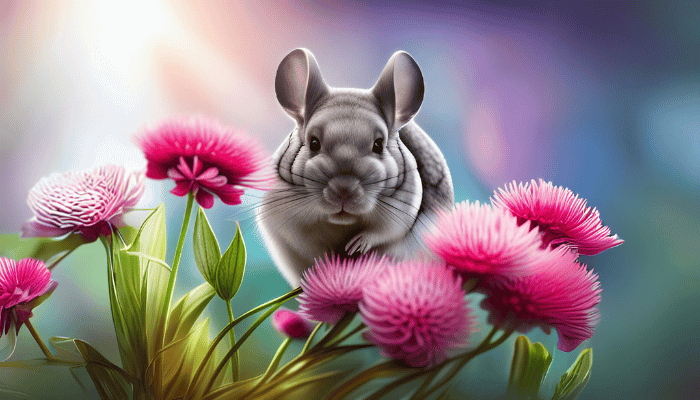
To provide a more comprehensive understanding of chinchilla tail wagging, here are some frequently asked questions along with detailed answers:
What Does It Mean When a Chinchilla Wags Its Tail Rapidly?
When a chinchilla wags its tail rapidly, it can have various meanings. It may indicate excitement, playfulness, communication, or even stress. Understanding the context and other accompanying behaviours is crucial to interpreting the tail wagging correctly.
Is tail wagging common in chinchillas?
Tail wagging is relatively common in chinchillas. Many chinchilla owners observe this behaviour in their pets.
Is Tail Wagging in Chinchillas a Sign of Happiness?
Chinchilla tail wagging can be a sign of happiness, especially when it occurs during playtime or interactions with their human companions. However, it’s essential to consider the overall behaviour and body language to determine their emotional state accurately.
Should I Be Concerned if My Chinchilla’s Tail Is Always Wagging?
If your chinchilla’s tail is constantly wagging, it could be a cause for concern. It may indicate chronic stress, discomfort, or underlying health issues. Monitoring your chinchilla’s behaviour and seeking veterinary advice is advisable in such cases.
Can Chinchillas Control Their Tail Wagging?
Chinchillas have some control over their tail movements, and they may wag their tails intentionally to convey messages or emotions. However, certain factors, such as excitement or fear, can also trigger involuntary tail wagging.
Are there any health issues associated with chinchilla tail wagging?
Tail wagging itself is not a health issue. However, if it’s accompanied by other concerning symptoms, it could be indicative of an underlying health problem.
How Can I Help My Chinchilla if Its Tail Wagging Indicates Stress?
If your chinchilla’s tail wagging is a result of stress, take steps to create a calm and secure environment. Provide them with hiding spots, and appropriate socialization, and ensure their basic needs are met.



